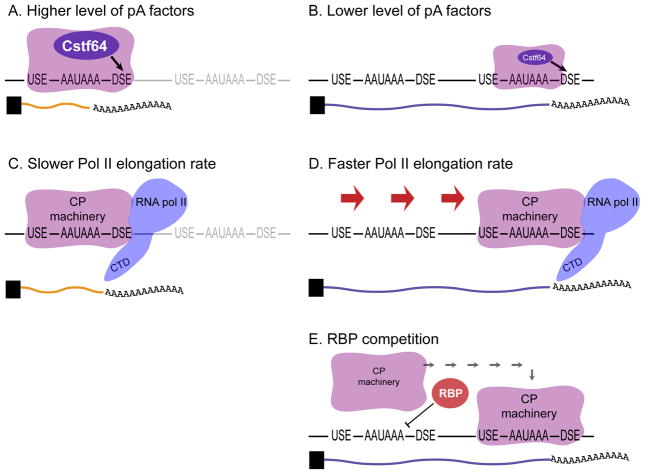Figure 4. General mechanisms of APA.
(A) High levels of polyA factors, such as CstF-64, can lead to preferential usage of proximal polyA sites. (B) Lower levels of polyA factors may cause bypass of proximal sites and favor distal polyA site usage. (C) The CP machinery is associated with the carboxy-terminal domain (CTD) of RNA pol II. Slower transcriptional elongation may favor cleavage at more proximal polyA sites, whereas faster elongation rate may promote distal site usage (D). (E) RNA-binding proteins (RBPs) are thought to promote 3′ UTR lengthening by competing with the cleavage and polyadenylation (CP) machinery for cis-elements around proximal polyA sites.

